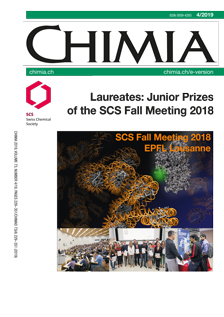What Can We Learn from First Principles Multi-Scale Models in Catalysis? The Role of the Ni/Al₂O₃ Interface in Water-Gas Shift and Dry Reforming as a Case Study
DOI:
https://doi.org/10.2533/chimia.2019.239PMID:
30975250Keywords:
Density functional theory, Metal/oxide interfaces, Microkinetic modeling, Supported metal nanoparticle catalystsAbstract
Computational first principles models based on density functional theory (DFT) have emerged as an important tool to address reaction mechanisms and active sites in metal nanoparticle catalysis. However, the common evaluation of potential energy surfaces for selected reaction steps contrasts with the complexity of reaction networks under operating conditions, where the interplay of adsorbate populations and competing routes at reaction conditions determine the most relevant states for catalyst activity and selectivity. Here, we discuss how the use of a multi-scale first principles approach combining DFT calculations at the atomistic level with kinetic models may be used to understand reactions catalyzed by metal nanoparticles. The potential of such an approach is illustrated for the case of Al2O3-supported Ni nanoparticle catalysts in the water-gas shift and dry reforming reactions. In these systems, both Ni nanoparticle (metal) as well as metal/oxide interface sites are available and may play a role in catalysis, which depends not only on the energy for critical reaction steps, as captured by DFT, but also on the reaction temperature and adsorbate populations, as shown by microkinetic modelling and experiments.
Downloads
Published
How to Cite
Issue
Section
License
Copyright (c) 2019 Swiss Chemical Society

This work is licensed under a Creative Commons Attribution-NonCommercial 4.0 International License.







